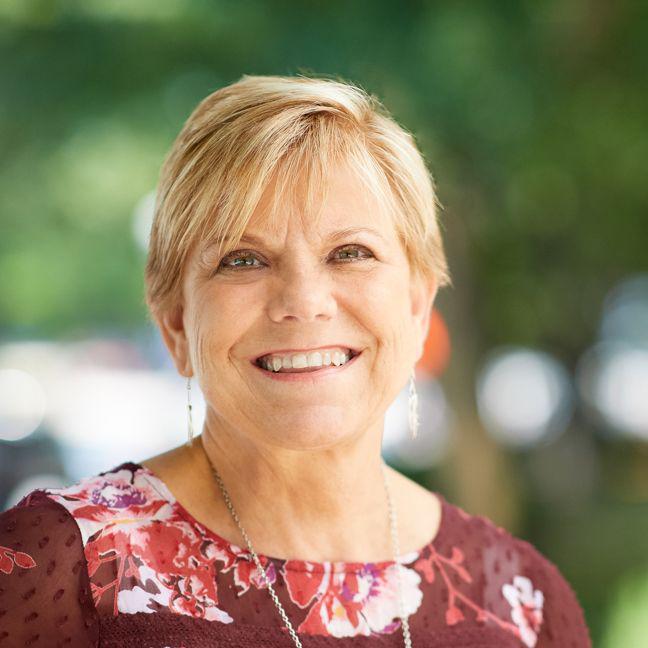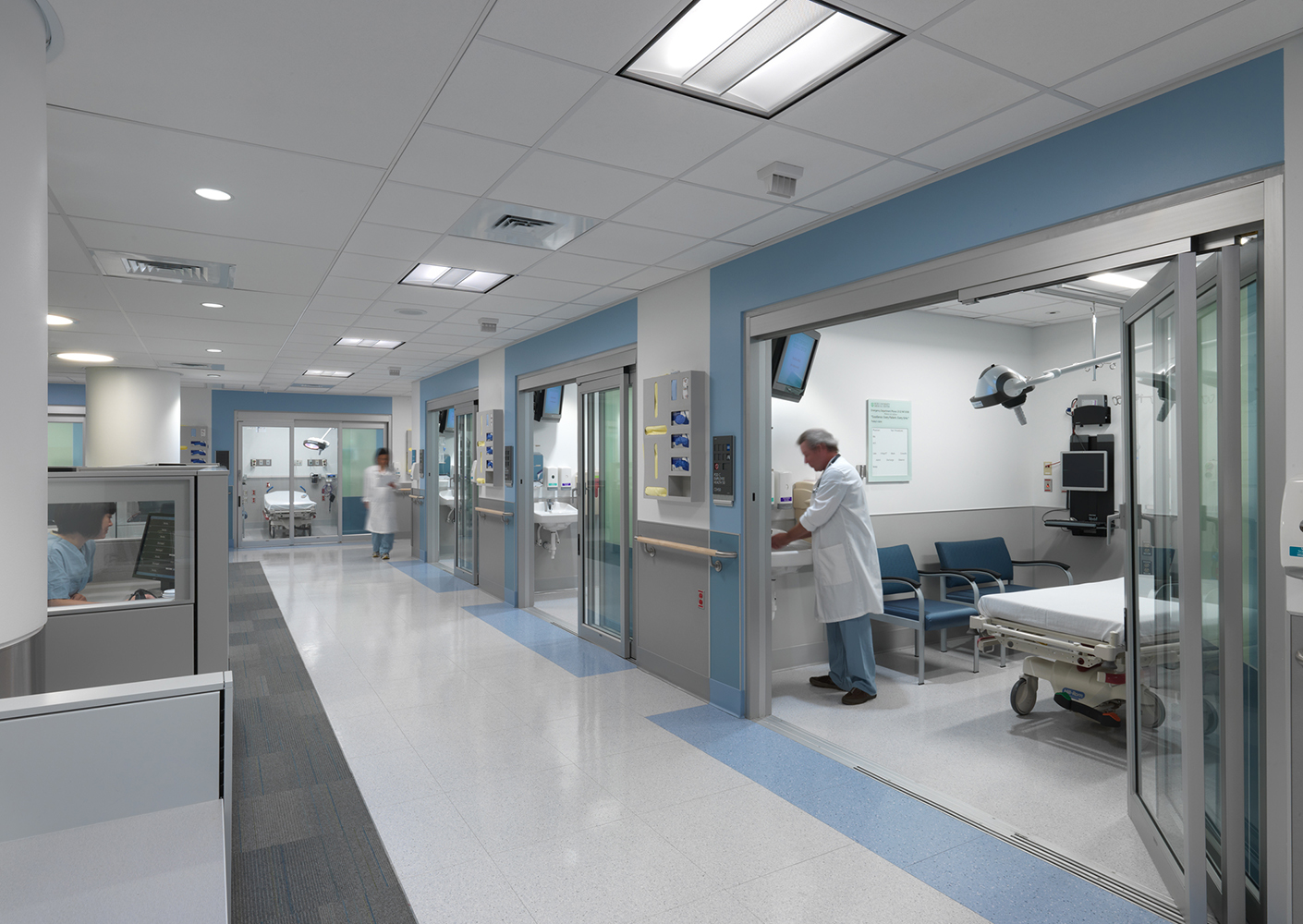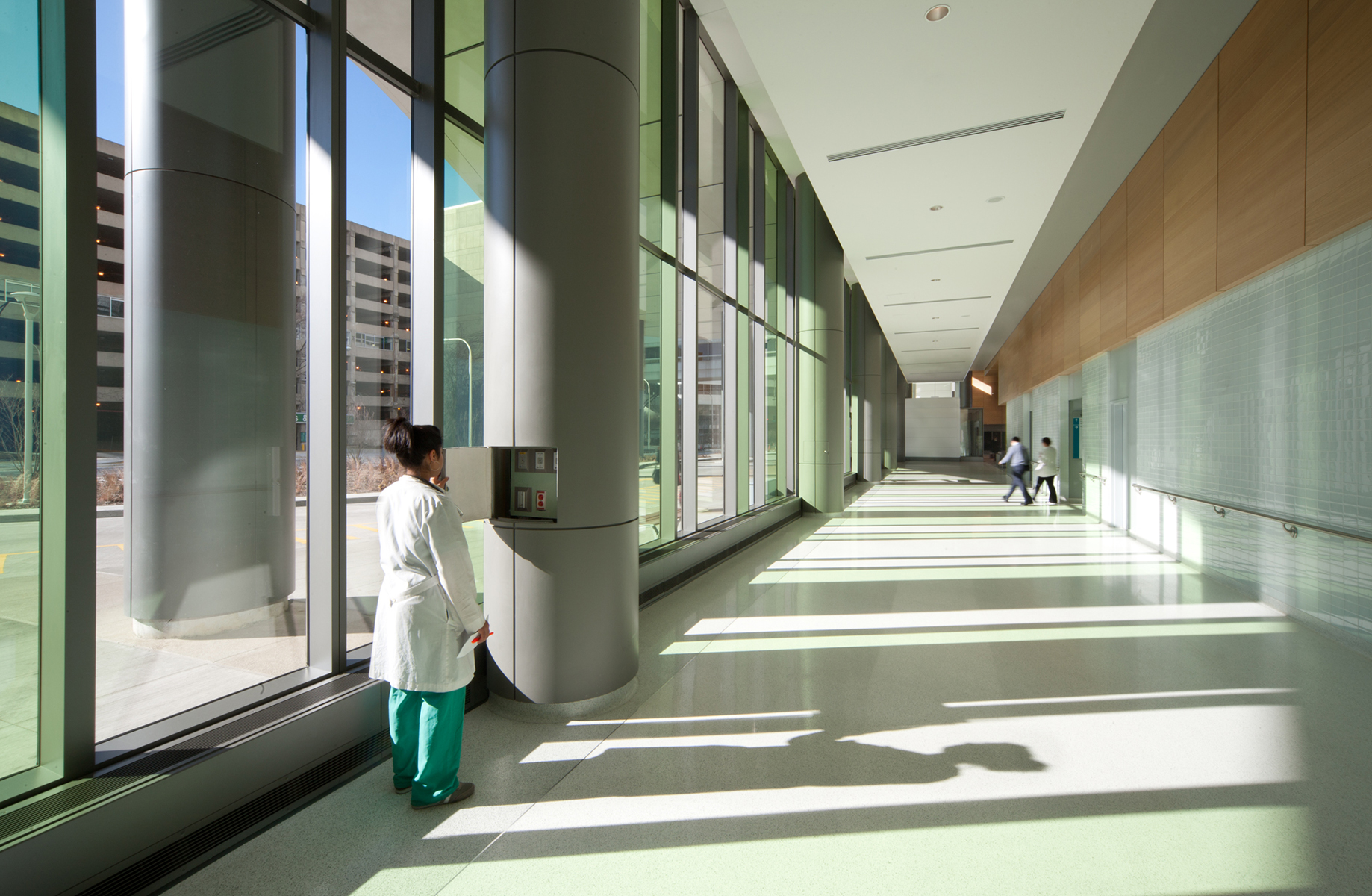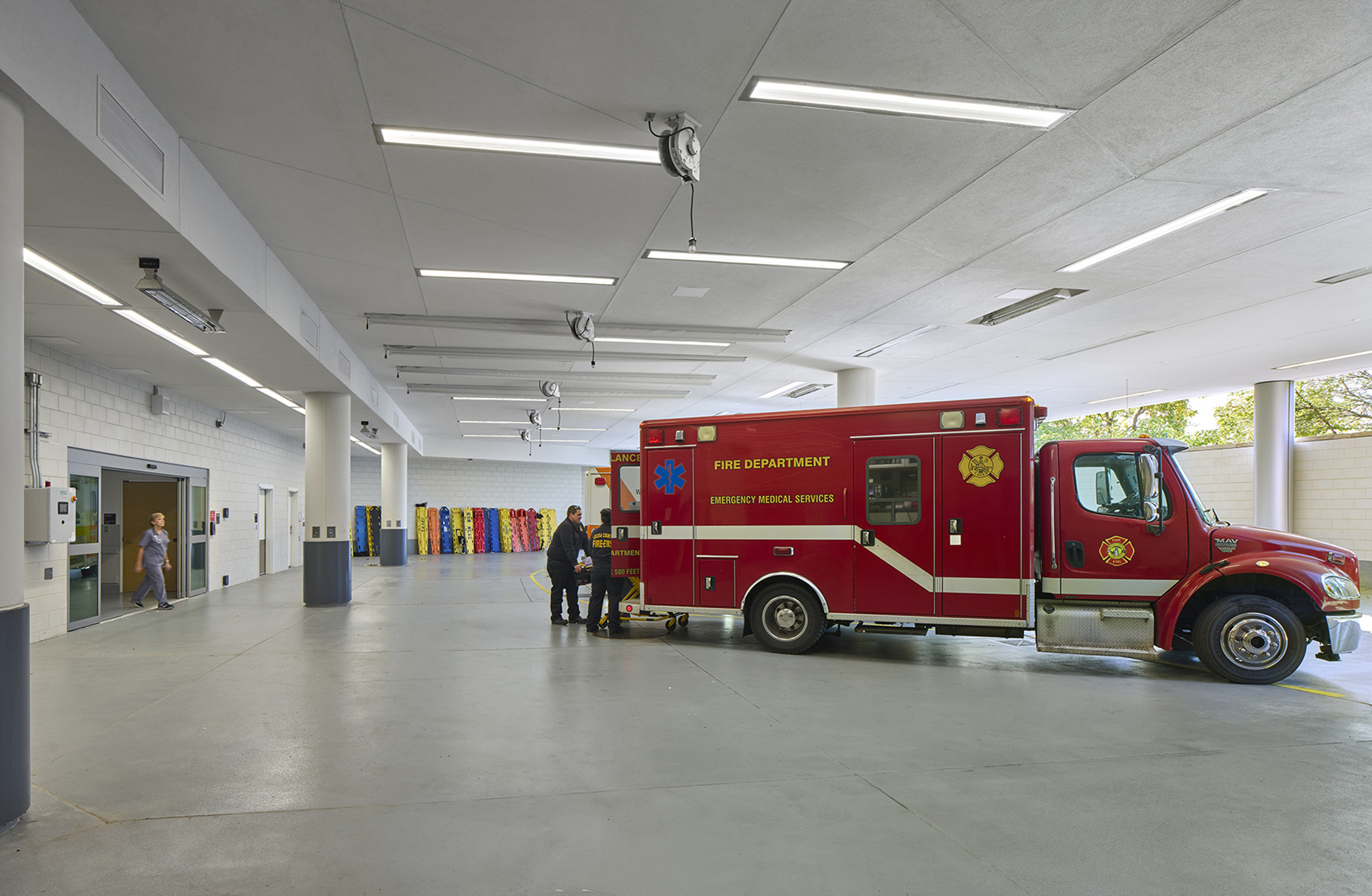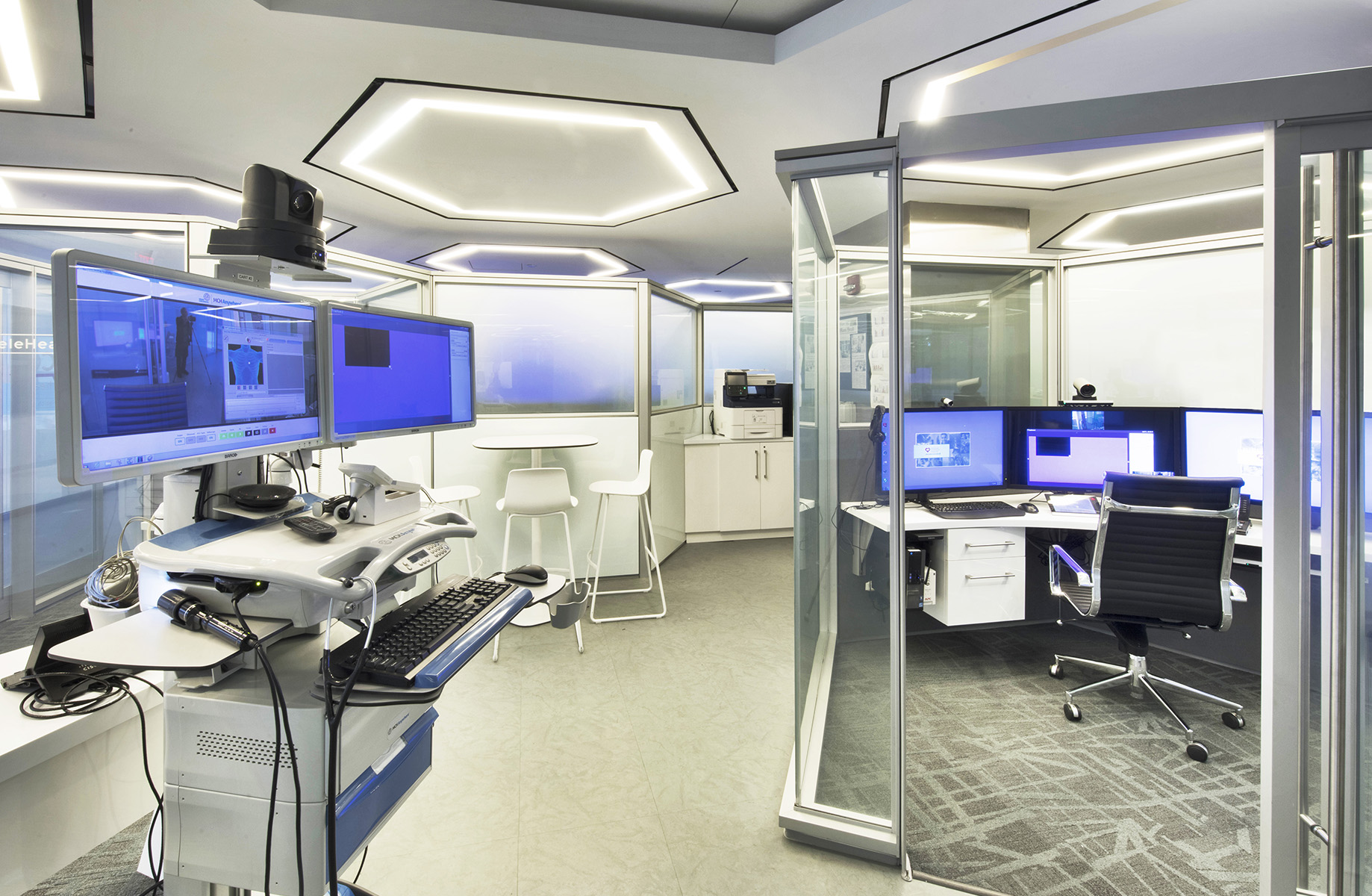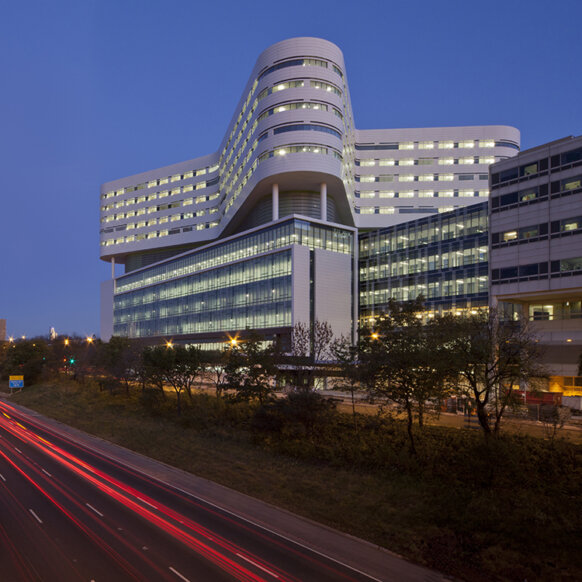Before coming to Perkins&Will, I was the Nursing Director of Emergency Services at a large trauma center for more than 20 years. Now, as a medical planner at our firm, I’ve focused on operational planning in healthcare architecture for the last 15 years. In our current pandemic, I think back to working at the hospital during 9/11 and the preparation that was both invaluable and necessary to respond to the disaster. We had been through many disaster drills in the past and had our command center set up. That was a time for action, and now it is, too.
Amidst the current outbreak of COVID-19, keeping patients, their families, and the healthcare workers at the front lines safe is a national priority, yet it is one that comes with unique challenges. When addressing this pandemic, hospital design and capacities are critical for success in both response and safety measures for all parties involved. Our teams design with the priorities of emergency room spaces, rapid isolation and contaminant containment in mind, creating spaces that can be easily sectioned off to treat infected patients while keeping those outside safe.
Here are some of our recent projects that incorporate these resilient design elements:
